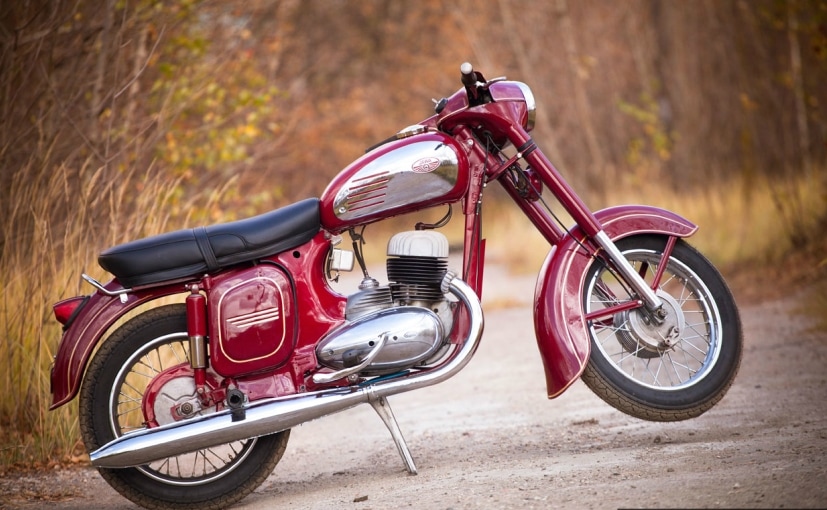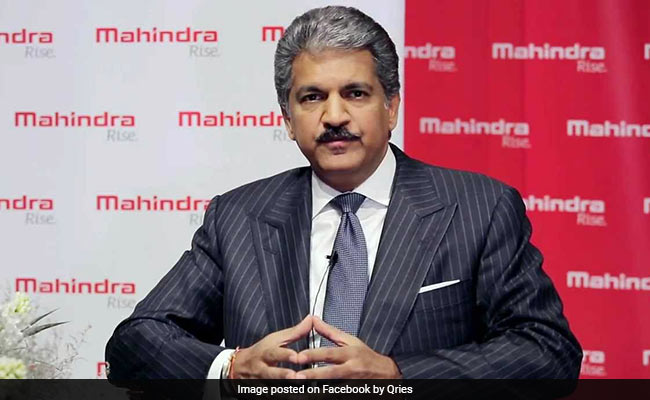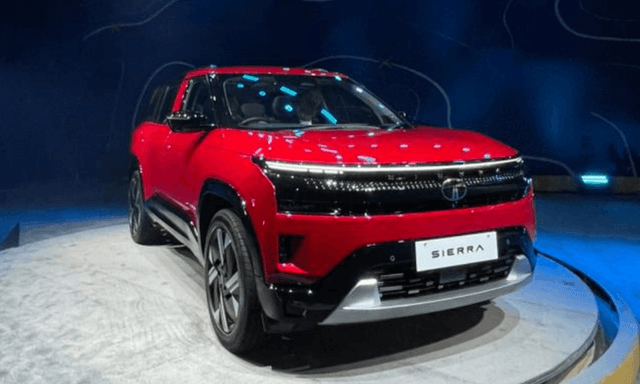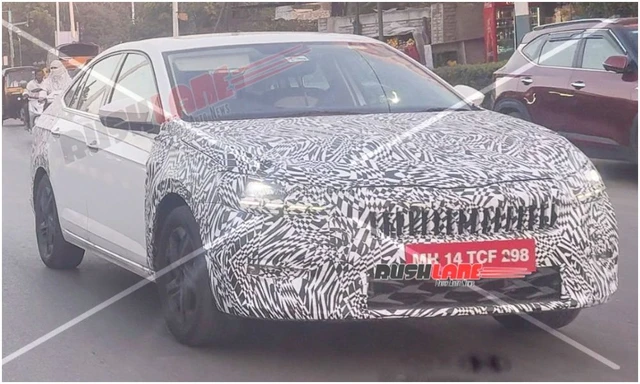Jawa Motorcycles: 5 Things To Know!

Jawa Motorcycles invoke pleasant memories for a plethora of Indians. The brand, in its prime during the 1960s and '70s, was known for its young and vibrant motorcycles that were a strong part of the then pop culture, despite being a Czech brand. Over the years though, the Jawa motorcycles disappeared from showrooms, but continue live on amidst enthusiasts, owners and loyalists that certainly want the brand to make a comeback. That's exactly what will happen in a few hours from now as Jawa Motorcycles will officially announce its revival in India, albeit in a whole new avatar, and backed by a completely different team. Before the company announces its first bike for India, let's take a quick at the Jawa's journey in the country.
Also Read: Jawa Motorcycle Range Launched In India; Prices start at Rs. 1.55 Lakh

(The Jawa brand traces its origins to Czech Republic in 1929)
Origins
The Jawa brand traces its roots back to the Czech Republic. With manufacturing taking prominence after World War I, engineer Frantisek Janecek purchased the motorcycle business Wanderer from German manufacturer Winklhofer & Jaenicke in 1929, along with the design and tooling for the new Wanderer 500 motorcycle. The motorcycle company was re-branded as Jawa, taking the first two letters from "Janicek" and "Wanderer," The first offering from the company was the Jawa 500 OHV and essentially the Wanderer 500, for which Janicek had purchased the design and tooling rights of, as part of the deal.
Also Read: Jawa Motorcycles Unveil Date Announced
Between 1929 and 1948, Jawa made a host of motorcycles including popular 175 cc and 250 cc offerings, with the bikes being exported to a number of markets including the US. However, post World War II, exports to the allied countries diminished behind the Iron Curtain while that to third world countries boomed. The company had a range of motorcycles now including very popular Perak and Californian which further helped popularise the brand. The following years during 1960-70s, also saw Jawa compete in motocross and Enduro championships. It was during this era that Jawa made its entry in India.
Also Read: Upcoming 300 cc Jawa Motorcycle Exhaust Note Teased

(The new Jawa motorcycle is powered by a modern 293 cc liquid-cooled mill with 27 bhp to offer)
Entry Into India
The first Jawa motorcycles arrived in India as full-imports during the 1950s. However, sales picked once local manufacturing begun in the 1960s. Two Parsi entrepreneurs Rustom and Farrokh Irani starting importing the bikes under the brand name 'Ideal Jawa' into India, while the factory was set-up in 1961 in Mysore, Karnataka. The titular Mysore ruler King Jayachamaraja Wodeyar, had then personally inaugurated the plant that spread across the 25-acre property. Under the licence, Ideal Jawa produced the 250 Type 353/04 between 1961-1971, which quickly became a popular choice amidst the young motorcycle buyers in the country.
In 1971, the Iranis decided to manufacture bikes on their own as the licensing collaboration with Jawa expired. The company manufactured and sold the new motorcycles under the name "Yezdi" with technical assistance from Jawa. Models like the Jawa Roadking, Classic, Deluxe, CLII and Monarch were quite popular amidst motorcycle enthusiasts.
Also Read: Production-Spec Jawa 300 Motorcycle Leaked
In its heydays, the now defunct Mysore factory employed over 2000 people and produced over 40,000 bikes in a year. The most popular bikes produced at the plant were the Jawa 250 and the Jawa 50 Jet A Series.
Competition and Closure
At the peak of its game during the 1980s, Jawa started facing stiff competition from the then relatively new Japanese motorcycle makers entering the Indian market. The bikes from the Japs became quickly famous for being fuel efficient, reliable and inexpensive to maintain. Meanwhile, Jawa's reputation for being slow, heavy and unreliable stood out sorely against the competition. With sales taking a nose dive, Ideal Jawa soon ran into trouble with finances that further led to labour unrest at the Mysore plant. The factory was eventually closed down in 1996, ending the glorious era of the Jawas.

(The Mahindra Group holds 60 per cent stake in Classic Legends with Thareja and Irani holding the rest)
Classic Legends and Mahindra
22 years later since the last Yezdi Jawa motorcycle rolled out, Classic Legends Private Ltd., subsidiary of the Mahindra Group is all set to bring the brand back to life in India. The new company is a culmination of three individuals - Mahindra chairman Anand Mahindra, entrepreneur Anupam Thareja and real estate developer Boman Irani. Thareja, who was a research analyst with a number of banks including ABN, HSBC and CSFB, also served as a Director at Royal Enfield between 2005 and 2008. The latter company now stands as a direct rival to Jawa Motorcycles. Boman Irani, meanwhile, is the son of Rustom Irani, one of the founders of Ideal Jawa.
Classic Legends was incorporated in 2015 with Mahindra holding 60 per cent stake in the venture while Thareja and Irani hold the rest. The new Jawa bikes will be sold under this company, while using Mahindra's resources including the research and development centre as well as the production facilities.
Also Read: Jawa 300 cc Engine Details Revealed

(Jawa's new 300 cc motorcycle looks identical to the yesteryear bikes)
New Jawa 300 Motorcycle
Jawa Motorcycles is all set to start a new chapter in the Indian market. The resurrection of the brand has also brought the nostalgic enthusiasts back into play with a host of owners and clubs still around with fully restored motorcycles on road. However, the brand will now be looking to capture the vision of the new and young Indian buyer that has seen little of the brand in the last few decades, but has heard a tonne of stories from the veterans.
Jawa has revealed little about its all-new motorcycle, but we do know that it will be powered by a 293 cc single-cylinder, four-stroke engine tuned for 27 bhp and 28 Nm of peak torque. Leaked images have revealed the new bike being almost identical to the original Jawas, complete with the round headlamp, paint scheme and even the chain guard. More details though on the motorcycle will be available tomorrow, along with the company's plans for the future, new product offerings and how it positions itself with original Jawa brand that continues to be operational in Europe.
Trending News
Latest News
 car&bike Team | Dec 14, 2025Top-Spec Tata Sierra Accomplished, Accomplished+ Prices RevealedRegardless of the powertrain combination chosen, all Tata Sierra Accomplished+ trims cost upwards of Rs 20 lakh (ex-showroom).2 mins read
car&bike Team | Dec 14, 2025Top-Spec Tata Sierra Accomplished, Accomplished+ Prices RevealedRegardless of the powertrain combination chosen, all Tata Sierra Accomplished+ trims cost upwards of Rs 20 lakh (ex-showroom).2 mins read car&bike Team | Dec 13, 2025Skoda Slavia Facelift Spied Testing Again Ahead Of DebutThe facelifted Slavia is expected to debut in 2026 as Skoda-VW India looks to refresh its India 2.0 range.1 min read
car&bike Team | Dec 13, 2025Skoda Slavia Facelift Spied Testing Again Ahead Of DebutThe facelifted Slavia is expected to debut in 2026 as Skoda-VW India looks to refresh its India 2.0 range.1 min read car&bike Team | Dec 13, 20252026 MG Hector Facelift Interior Previewed Ahead Of DebutLatest teaser video of the upcoming Hector facelift suggests minimal cosmetic changes to the interior as well as reveals a new alloy-wheel design.1 min read
car&bike Team | Dec 13, 20252026 MG Hector Facelift Interior Previewed Ahead Of DebutLatest teaser video of the upcoming Hector facelift suggests minimal cosmetic changes to the interior as well as reveals a new alloy-wheel design.1 min read Jaiveer Mehra | Dec 13, 2025Passenger Vehicle, Two-Wheeler Sales Surge In November 2025: SIAMBoth segments reported a growth in the region of 20 per cent, though year-to-date sales growth in FY2026 was notably flatter at around 3 per cent.1 min read
Jaiveer Mehra | Dec 13, 2025Passenger Vehicle, Two-Wheeler Sales Surge In November 2025: SIAMBoth segments reported a growth in the region of 20 per cent, though year-to-date sales growth in FY2026 was notably flatter at around 3 per cent.1 min read car&bike Team | Dec 12, 2025Nissan Entry MPV Design To Be Unveiled On December 18New MPV to be the first of three new models for India by Nissan, alongside the Tekton and a three-row SUV.1 min read
car&bike Team | Dec 12, 2025Nissan Entry MPV Design To Be Unveiled On December 18New MPV to be the first of three new models for India by Nissan, alongside the Tekton and a three-row SUV.1 min read Jaiveer Mehra | Dec 12, 2025New Mini Convertible Launched At Rs 58.50 LakhDrop-top variant of the iconic Cooper hatchback available in a single Cooper S spec.1 min read
Jaiveer Mehra | Dec 12, 2025New Mini Convertible Launched At Rs 58.50 LakhDrop-top variant of the iconic Cooper hatchback available in a single Cooper S spec.1 min read
 Janak Sorap | Dec 11, 2025Harley-Davidson X440 T First Ride Review: Smarter and SharperHarley-Davidson has taken the X440 and given it a more focused and engaging twist. The result is the X440 T—essentially the same platform but updated in areas that give the motorcycle more appeal and riders more thrill.5 mins read
Janak Sorap | Dec 11, 2025Harley-Davidson X440 T First Ride Review: Smarter and SharperHarley-Davidson has taken the X440 and given it a more focused and engaging twist. The result is the X440 T—essentially the same platform but updated in areas that give the motorcycle more appeal and riders more thrill.5 mins read Shams Raza Naqvi | Dec 10, 20252025 Mini Cooper Convertible Review: More Colour On Indian RoadsThe updated Mini Cooper Convertible is set to be launched in the Indian market in the next few days. We drive it around Jaisalmer for a quick review.1 min read
Shams Raza Naqvi | Dec 10, 20252025 Mini Cooper Convertible Review: More Colour On Indian RoadsThe updated Mini Cooper Convertible is set to be launched in the Indian market in the next few days. We drive it around Jaisalmer for a quick review.1 min read Bilal Firfiray | Dec 8, 2025Tata Sierra Review: India’s New Favourite?Marking its return after a few decades, the reborn Sierra has made everyone sit up and take notice. But is it worth the hype?10 mins read
Bilal Firfiray | Dec 8, 2025Tata Sierra Review: India’s New Favourite?Marking its return after a few decades, the reborn Sierra has made everyone sit up and take notice. But is it worth the hype?10 mins read Girish Karkera | Dec 4, 20252026 Honda Prelude First Drive: Domesticated Civic Type RA sporty-looking coupe built to give customers a taste of performance but not at the expense of everyday practicality.5 mins read
Girish Karkera | Dec 4, 20252026 Honda Prelude First Drive: Domesticated Civic Type RA sporty-looking coupe built to give customers a taste of performance but not at the expense of everyday practicality.5 mins read Seshan Vijayraghvan | Nov 29, 2025Mahindra XEV 9S First Drive Review: Big Electric SUV, Bigger ExpectationsThe XEV 9S lands at a time when the EV crowd is growing fast. It’s a big, born-electric, three-row SUV that starts under 20 lakh. It sits close to the XUV700 in size, but the brief is very different. Here’s what it’s like on the road.11 mins read
Seshan Vijayraghvan | Nov 29, 2025Mahindra XEV 9S First Drive Review: Big Electric SUV, Bigger ExpectationsThe XEV 9S lands at a time when the EV crowd is growing fast. It’s a big, born-electric, three-row SUV that starts under 20 lakh. It sits close to the XUV700 in size, but the brief is very different. Here’s what it’s like on the road.11 mins read

































































































































